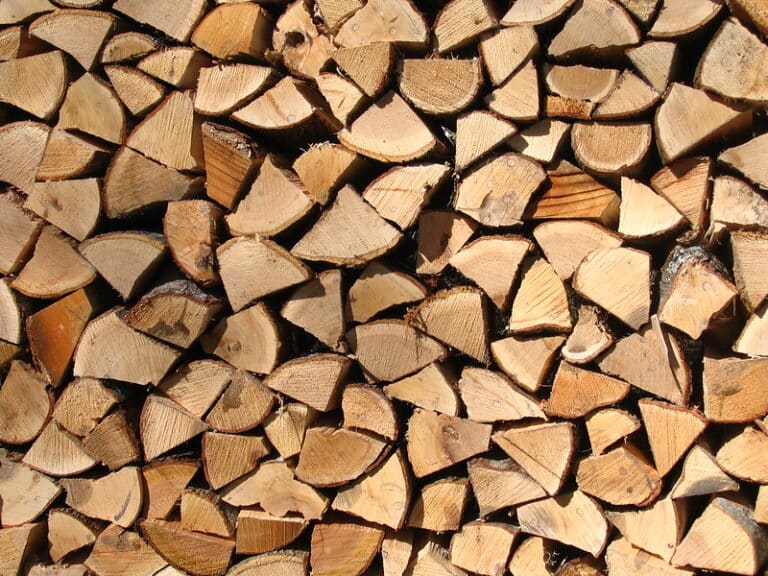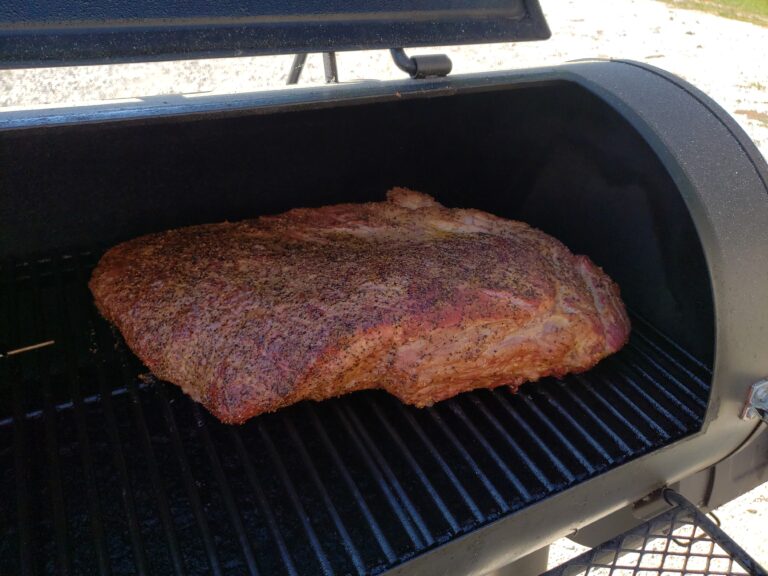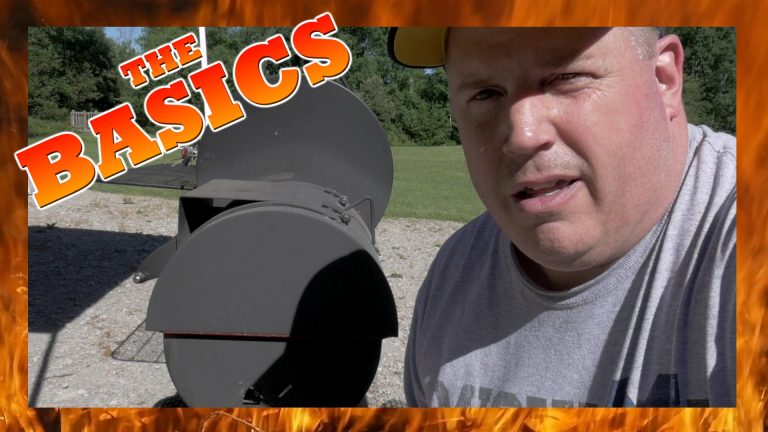37 Essential Meat Smoking Tips for Beginners
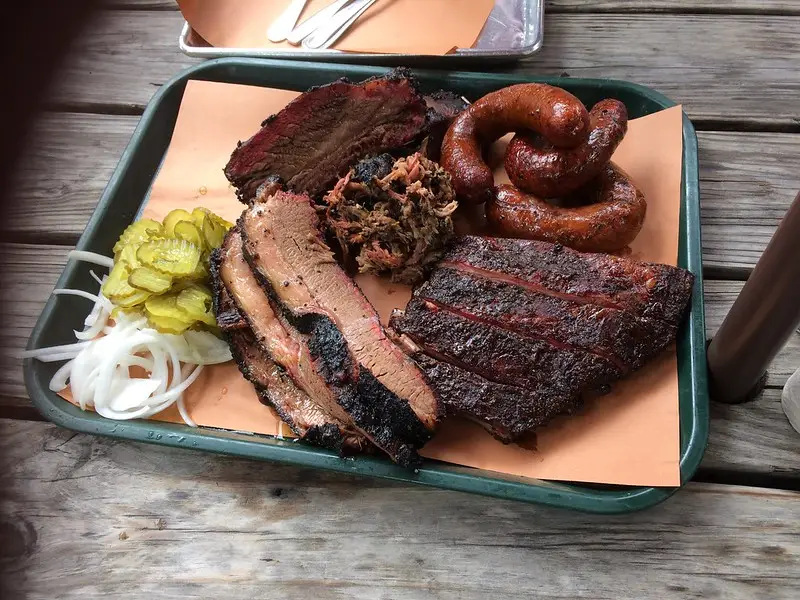
What are the Best Meat Smoking Tips?
Hey there, future pitmaster! Ready to dive into the delicious world of meat smoking? Imagine turning your backyard into a BBQ haven, where every meal is an explosion of smoky, savory goodness. Whether you’re dreaming of juicy brisket or perfectly smoked pork shoulder, this guide has you covered.
Smoking meat is an art and a science, and mastering it can elevate your BBQ game to new heights. From choosing the right smoker to understanding the nuances of different meats, each step is crucial.
In this guide, we’ll cover everything from preparation and perfecting techniques to overcoming common challenges and diving into advanced methods. So grab your apron, fire up that smoker, and let’s embark on this flavorful adventure together! Ready to smoke your way to BBQ glory? Let’s get started!
Preparation for Smoking Meat
Choosing Smoker and Smoker Setup
Choose the Right Smoker
Selecting the right smoker is crucial for beginners. There are several types to consider:
- Electric smokers are user-friendly and ideal for set-and-forget cooking.
- Gas smokers offer convenience and easy temperature control.
- Pellet smokers provide consistent heat and smoke flavor using wood pellets.
- Charcoal smokers, like the Weber Smokey Mountain, give a traditional smoky flavor and excellent temperature control.
Understanding your smoker’s strengths and weaknesses will help you achieve the perfect smoke for your meat. A good smoker is your first step towards mastering the art of meat smoking.
Click here for an in-depth article on the Best Starter Smoker
Preheat Your Smoker

Preheating your smoker ensures even cooking and proper smoke infusion. Let the smoker reach 225°F to 250°F before adding meat. This can take up to 30 minutes but ensures the meat starts cooking immediately. A preheated smoker helps maintain a consistent temperature, crucial for achieving perfect smoky flavor.
Avoid Using Lighter Fluid

Avoid using lighter fluid to ignite your smoker’s charcoal as it imparts a chemical taste to meat. Instead, use a chimney starter or natural fire starters. Lighter fluid leaves residues that interfere with the natural flavors. Keeping your smoking process clean ensures the best taste and quality.
Use a Water Pan
Using a water pan in your smoker keeps meat moist during smoking. It helps regulate the smoker’s temperature, preventing the meat from drying out. This method is effective for large cuts like pork shoulder or beef brisket. Adding water, beer, or juice can infuse additional flavors into your smoked meat. Consider using fruit juice in the water pan to create a humid environment and add a subtle sweetness to the meat drippings, which can be used for BBQ sauce or other purposes.
Soak Wood Chips
Soaking wood chips before adding them to your smoker prevents quick burning and produces consistent smoke. Use water, apple juice, or beer for soaking. This technique ensures steady smoke throughout the process, enhancing your meat’s flavor without risking a burnt, bitter taste. If using a pellet smoker, do not soak wood pellets.
Protein Prep
Know Your Meat
Understanding your meat is essential for perfect smoking. Different meats require different cooking temperatures and have specific target temperatures when done. Additionally, some meats need to be cooked to a specific tenderness for the best results:
Meat | Cooking Temperature | Done Temperature | Notes |
Pork Shoulder | 225°F to 250°F | 195°F to 205°F | Cook until tender, so it pulls apart easily. |
Beef Brisket | 225°F to 250°F | 195°F to 205°F | Aim for tenderness where a probe slides in with little resistance. |
Chicken and Turkey | 275°F to 300°F | 165°F | Cook to the internal temperature, don't overcook |
Pork Ribs | 225°F to 250°F | 190°F to 203°F | Cook until the meat is tender and starts to pull away from the bones. |
Pork Chops | 225°F to 250°F | 145°F | Lighter fruit woods like apple pair well with pork chops, while hickory stands up well to their flavor. |
Fish (e.g., Salmon) | 200°F to 225°F | 145°F | Cook to the internal temperature, don't overcook |
Tailoring your approach to each type of meat ensures optimal flavor and texture.
Use High-Quality Meat
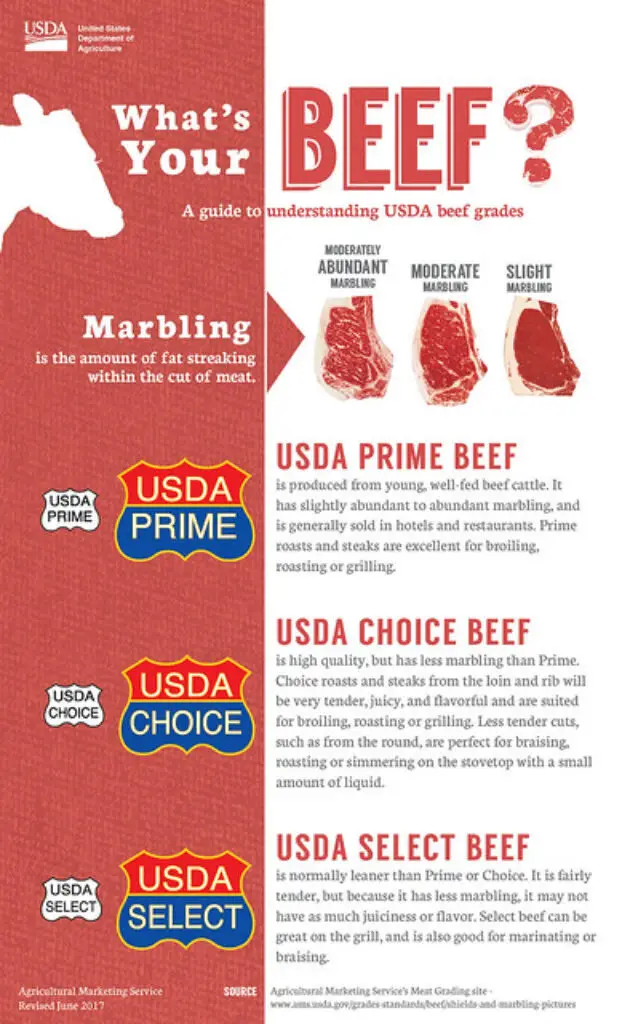
High-quality meat is essential for great smoked results. Fresh, well-marbled cuts ensure better flavor and tenderness. For pork shoulder, look for good marbling and a fat cap. When smoking beef brisket, the grade matters:
- Select: Leaner, less marbling
- Choice: Good balance of marbling and tenderness
- Prime: Highest marbling, most flavor and juiciness
High-quality meats withstand long smoking without drying out, enhancing your BBQ results.
Trim Excess Fat
Trimming excess fat from your meat before smoking helps prevent flare-ups and ensures even cooking. For pork shoulder and beef brisket, leave a thin layer of fat to keep the meat moist during the smoking process. Removing large chunks of fat allows the rub and smoke to penetrate better, enhancing flavor. Properly trimmed meat results in a cleaner, more enjoyable eating experience.
Marinate Overnight
Marinating meat overnight infuses it with flavor and tenderizes tougher cuts. Use a marinade that complements your meat, such as vinegar-based for pork shoulder or spice-rich for beef brisket. Marinate for 12 to 24 hours to allow flavors to deeply penetrate. This step enhances the taste and texture of your smoked meat, ensuring a delicious outcome. Incorporate olive oil into your marinade to help tenderize the meat and add a rich, smooth flavor profile.
Apply Rub Evenly
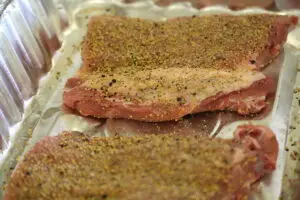
Applying rub evenly ensures consistent flavor throughout. For larger cuts like brisket, pork shoulder, or turkey breast, use generous seasoning to form a flavorful crust. For smaller or thinner cuts like chicken, ribs, or fish, avoid over-seasoning to prevent overpowering natural flavors. Pat the rub gently into the meat to help it adhere and enhance taste.
Let Meat Come to Room Temperature
Allow meat to come to room temperature before smoking for even cooking. For larger cuts like beef brisket or pork butt, take it out 1-2 hours prior. This prevents the exterior from cooking too quickly. Letting meat rest after applying a rub helps develop a pellicle, enhancing smoke adhesion and flavor.
Smoking Meat to Perfection
Smoker Control – Temperature & Smoke
Maintain Consistent Temperature
Keeping a consistent temperature and using indirect heat is crucial for smoking. Aim for 225°F to 250°F. Use a reliable thermometer to monitor the smoker and meat. Keep the smoker closed as much as possible. Adjust vents to control airflow and add fuel or wood as needed. Using a water pan helps regulate heat, ensuring even cooking and perfect flavor.
Use a Thermometer
Using a handheld instant-read thermometer is essential for precise smoking. I use it to check the internal temperature and tenderness of the meat. Insert the thermometer into the thickest part, avoiding bones. This quick method ensures the meat reaches perfect doneness, resulting in juicy, flavorful BBQ every time.
Control Airflow
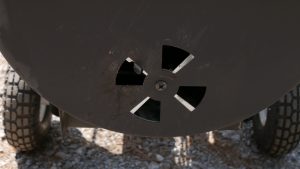
In a charcoal smoker, controlling airflow is key to maintaining proper temperature and smoke quality. Airflow manages both temperature and smoke cleanliness. Opening vents raises temperature and produces cleaner smoke, enhancing meat flavor. Adjust vents to ensure even cooking and optimal smoke absorption, resulting in perfectly smoked BBQ.
Know When to Add Wood
Adding wood at the right time is crucial for maintaining consistent smoke and flavor. Add wood chunks or chips when the initial smoke starts to thin out. This ensures a steady stream of clean smoke. Avoid adding too much wood at once, as it can produce thick, bitter smoke. Regularly adding smaller amounts of wood maintains the perfect balance, resulting in delicious, smoky meat.
Practice with Different Woods
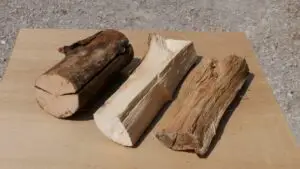
Experimenting with different woods can significantly enhance your smoked meat’s flavor. Hickory and mesquite offer bold flavors ideal for beef, while apple and cherry provide milder, sweeter notes perfect for pork and poultry. Mixing wood types creates unique flavor profiles. Understanding each wood’s characteristics helps match the right wood to your meat, enhancing your overall smoking experience.
Meat Cooking Method
Stay Hydrated
Keeping meat hydrated during smoking is essential for juicy results. Use a water pan inside the smoker to maintain moisture. Periodically spritz the meat with water, apple juice, or another liquid to keep it moist. This is crucial for long smoking sessions with large cuts like pork shoulder or beef brisket. Hydration prevents the meat from drying out, ensuring a tender and delicious final product. Collect meat drippings in a drip pan to create a flavorful liquid that can be used for BBQ sauce or other purposes.
Use a Meat Probe
Using a meat probe is crucial for perfectly smoked meat. Insert the probe into the thickest part, avoiding bones, to monitor the internal temperature accurately. This ensures the meat is safe and cooked to perfection. It’s essential for cooking pork shoulder, brisket, turkey breast, and whole chicken to the safe temperature of 165°F, achieving desired tenderness and juiciness.
Wrap Meat in Butcher Paper
Wrapping meat in butcher paper during smoking retains moisture while allowing smoke to penetrate. For brisket and pork butt, wrap at 160°F to prevent drying out. Unlike foil, butcher paper lets some steam escape, preserving the bark and texture. This method ensures a tender, juicy result without sacrificing smoky flavor and crust, enhancing regional cooking variations.
The Art of Slow Cooking Smoked Meat
Use Lump Charcoal for Natural Flavor
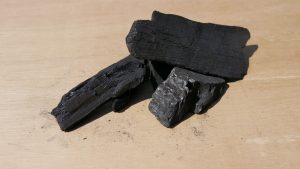
Using lump charcoal in your smoker enhances the natural flavor of your meat. Unlike briquettes, lump charcoal is made from pure hardwood, producing cleaner and more flavorful smoke. It also burns hotter, providing consistent heat. However, lump charcoal doesn’t last as long as briquettes, so you may need to add more during longer smoking sessions. Using burning coals provides a steady heat source and enhances the smoky flavor of your meat.
Use Charcoal Briquettes for Consistency
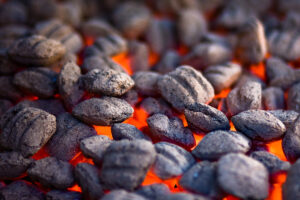
Charcoal briquettes provide a consistent heat source, making them ideal for long smoking sessions. They burn evenly and maintain a steady temperature, reducing the need for frequent adjustments. While they don’t enhance flavor like lump charcoal, their reliability in maintaining the cooking temperature ensures your meat cooks evenly, resulting in perfectly smoked BBQ.
Stay Nearby
Staying nearby your smoker is crucial for maintaining consistent temperature and smoke levels. Regularly check the smoker to ensure it’s operating correctly and adjust vents as needed. This vigilance helps prevent temperature fluctuations and ensures your meat cooks evenly. Continuous monitoring is key to achieving perfectly smoked BBQ, especially during long smoking sessions.
Check Fuel Supply
Regularly checking your fuel supply is essential for maintaining consistent heat in your smoker. For pellet smokers, ensure the hopper is filled with wood pellets. Charcoal smokers require adding charcoal as needed to maintain temperature. Gas smokers should have a spare propane tank ready. Keeping a steady fuel supply ensures even cooking and perfect smoked flavor.
Rubs and Seasonings for Smoked Meat
Experiment with Rubs and Sauces
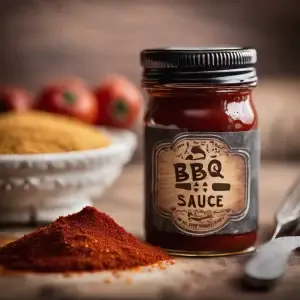
Experimenting with different rubs and sauces can elevate your smoked meat. Try a variety of dry rubs and marinades to find your favorite flavor combinations. Use spice blends, herbs, and even fruit juices for unique tastes. Adjusting rubs and sauces allows you to customize and perfect your BBQ, creating a signature flavor that stands out.
Rub and Sauce Recommendations by Meat Type
Meat Type | Rub Recommendations | Sauce Recommendations |
Pork Shoulder | Sweet and smoky rub, apple cider rub | Tangy vinegar-based BBQ sauce |
Beef Brisket | Texas-style salt and pepper rub | Rich, molasses-based BBQ sauce |
Chicken | Lemon herb rub, garlic and rosemary rub | Sweet and tangy BBQ sauce, honey mustard |
Pork Ribs | Brown sugar and chili powder rub | Sweet and smoky BBQ sauce |
Fish | Citrus herb rub, dill and lemon rub | Light lemon butter sauce, dill sauce |
Venison | Juniper and rosemary rub, black pepper and garlic rub | Berry-based sauce, red wine reduction |
Avoid Sugary Rubs at High Temperatures
Avoid using sugary rubs when smoking above 275°F, as sugar can burn and create a bitter taste. Opt for savory or herb-based rubs for high-heat cooking. This prevents unpleasant flavors and ensures your meat retains its natural taste and texture during the smoking process, resulting in a more enjoyable BBQ.
Overcoming Common Smoking Challenges
Don’t Peek Too Often
Avoid opening the smoker too frequently, as it causes heat and smoke to escape, disrupting the cooking process. Each time you peek, the temperature drops, extending the cooking time and affecting the meat’s flavor. Keeping the smoker closed ensures consistent temperature and smoke, leading to perfectly cooked, flavorful meat.
Avoid Over Smoking
Too much smoke can overpower the meat’s natural flavors and create a bitter taste. Use small amounts of wood and ensure a steady, thin smoke for the best results. Avoid adding wood continuously; instead, let the initial smoke settle before adding more. This balance enhances the meat’s flavor without overwhelming it.
Don’t Overload the Smoker
Avoid overcrowding the smoker, as this restricts airflow and prevents even cooking. Leave enough space between pieces of meat for the smoke to circulate properly. Overloading the smoker can lead to inconsistent results and affect the meat’s flavor and texture. Proper spacing ensures your BBQ is cooked evenly and thoroughly.
Learn to Control the Fire
Mastering fire control is essential for cooking meat consistently. Adjust the vents to regulate oxygen flow, which controls the temperature. Open vents increase heat, while closing them lowers it. Use a combination of lump charcoal and wood for steady heat and smoke. Understanding fire dynamics ensures perfectly cooked meat with balanced smoke flavor.
For tips on controlling a fire in an offset smoker click here.
Keep Spare Thermometers
Having spare thermometers is crucial for accurate temperature monitoring. Smoker and meat thermometers can fail or give inaccurate readings. Keeping backups ensures you can always check and maintain the proper temperature, preventing undercooking or overcooking. Reliable temperature control is key to achieving perfectly smoked meat every time.
Learn from Mistakes
Every smoking session is a learning opportunity. Take notes on what worked and what didn’t, from cooking times to wood types and seasoning. Adjust your techniques based on these experiences. Over time, this trial and error will improve your skills, leading to consistently better BBQ results and a deeper understanding of the smoking process.
Each session helps you understand how to cook meat more effectively, leading to better results over time.
Enjoy the Process
Smoking meat is as much about the journey as it is about the destination. Embrace the learning curve, experiment with flavors, and enjoy the time spent tending to your smoker. Share the experience with friends and family, and savor the anticipation of the delicious results. Remember, each smoke is an opportunity to create something unique and enjoyable.
Advanced Smoking Techniques
Try Different Meat Cuts
Experimenting with various meat cuts can enhance your BBQ experience. Try smoking less common cuts like lamb shoulder or pork cheeks. Each cut has unique flavors and textures, offering new challenges and rewards. This exploration not only diversifies your BBQ repertoire but also helps you master different smoking techniques.
Smoke Vegetables

Smoking vegetables adds a smoky depth to their natural flavors. Try smoking bell peppers, onions, or zucchini for a tasty side dish. Vegetables absorb smoke quickly, so monitor them closely. Smoking veggies not only diversifies your BBQ menu but also provides a delicious, healthy addition to your smoked meats.
Smoke Cheese and Nuts

Smoking cheese and nuts adds a rich, smoky flavor to these snacks. Use mild woods like apple or cherry to avoid overpowering their natural tastes. Cold smoking is ideal to prevent melting the cheese. Smoke nuts for a short duration to infuse them with flavor without burning. These smoked treats make great additions to your BBQ spread.
Join Smoking Communities
Joining smoking communities can enhance your BBQ skills. These groups offer support, share tips, and provide inspiration. Engage with fellow enthusiasts through forums, social media, or local clubs. Learning from others’ experiences and exchanging ideas helps you improve your techniques and discover new recipes, making your smoking journey more enjoyable and rewarding.
Smoking Community Resources on the Internet:
- Smoking Meat Forums: A comprehensive community for sharing tips, recipes, and advice on all things related to smoking meat.
- The BBQ Brethren Forum: A lively forum where BBQ enthusiasts discuss techniques, equipment, and recipes.
- Reddit – r/Smoking: A subreddit dedicated to the art of smoking meat, offering a wide range of discussions and resources.
Smoking Community Resources on Facebook:
- BBQ Pitmasters: A community for BBQ enthusiasts to share tips, recipes, and photos of their smoking adventures.
- Smoking Meat Low and Slow: A group dedicated to the art of low and slow smoking, featuring discussions on techniques, equipment, and recipes.
- Backyard Smokers BBQ: A friendly community for backyard BBQ enthusiasts to share their smoking experiences, ask questions, and get advice.
Conclusion
Congratulations, pitmaster! You’re now equipped with the essential tips to take your BBQ game to the next level. Remember, it all starts with choosing the right smoker and knowing your meat. Keep a consistent temperature, stay nearby to monitor the process, and experiment with different woods, rubs, and sauces. Don’t forget to keep your meat hydrated and use tools like meat probes for perfect results. Most importantly, enjoy the journey and learn from each smoking session. Join smoking communities to share your experiences and discover new techniques. Happy smoking!

